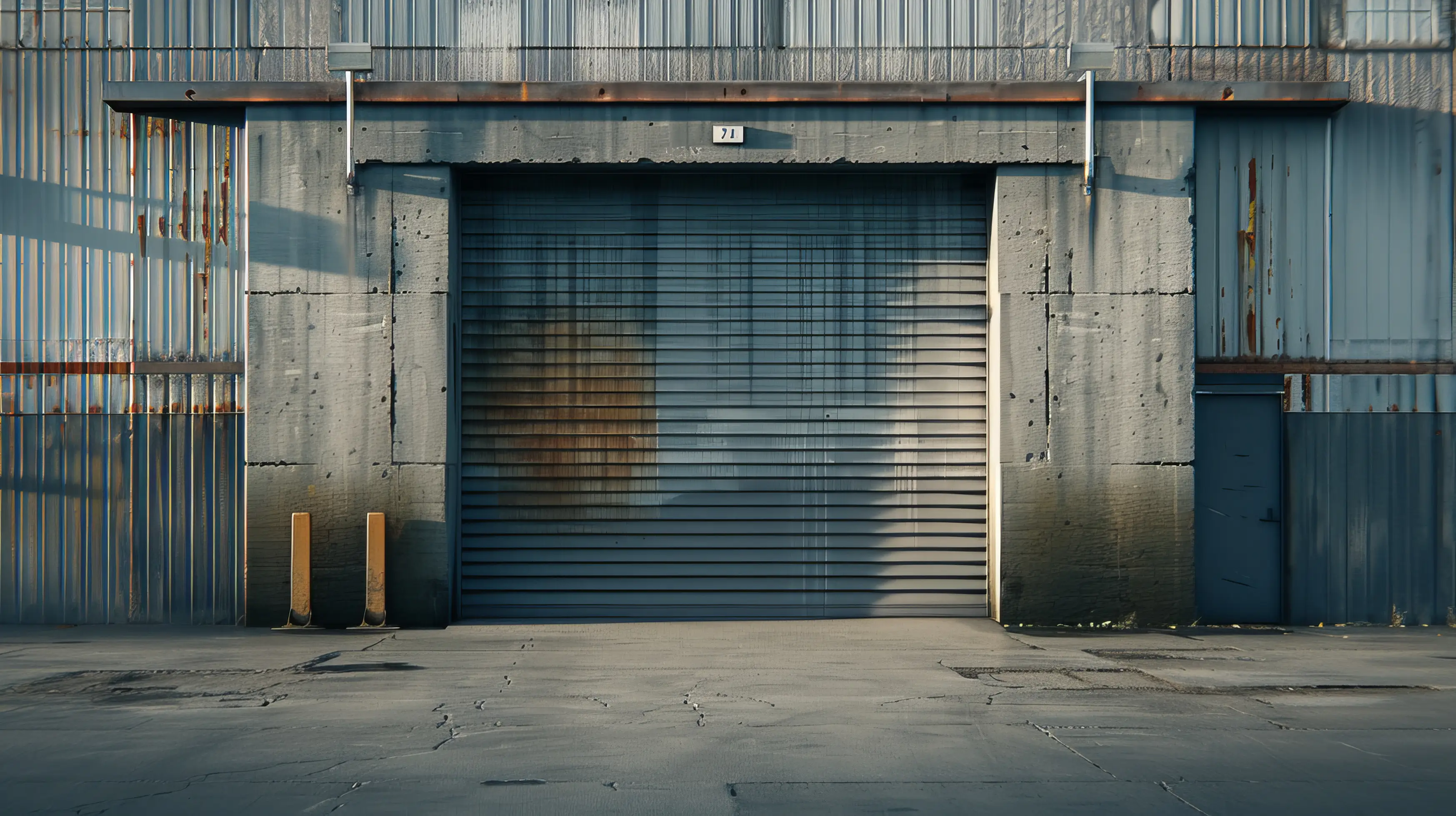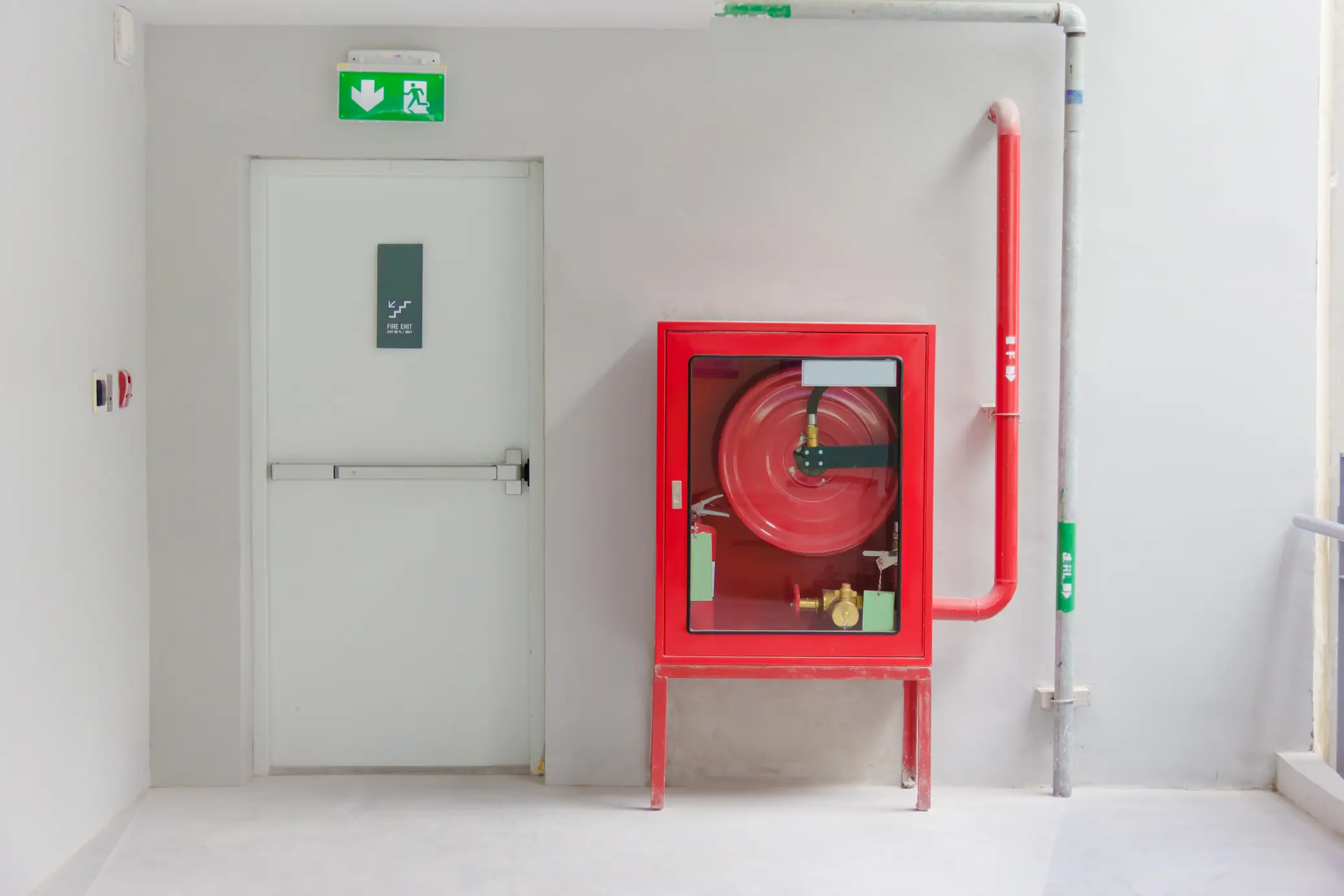Fire doors are a crucial element in any building’s safety infrastructure. Regular inspection of fire doors is essential to ensure their functionality and compliance with safety regulations.
In this guide, we will delve into the importance of fire door testing and inspections and provide you with a step-by-step approach to maintaining the integrity of these critical components of fire safety.
What is a Fire Door?
A fire door is a specially designed door built to resist fire, heat, and smoke. It serves a crucial role in fire safety by compartmentalizing buildings, preventing the spread of fire and smoke, and providing a safe exit route for occupants during emergencies, helping to minimize property damage and save lives.
Understanding the Importance of Fire Doors
Fire doors are not your typical doors; they are specially engineered to resist fire, heat, and smoke. These doors are a part of a building’s fire protection system, and their primary purposes include:
- Isolation: Fire doors are designed to categorize a building into fire-resistant sections, preventing the spread of fire from one area to another.
- Safety: They provide protection to occupants by giving them a safe and controlled passage to exit in the event of a fire.
- Ventilation: Fire doors help control the flow of oxygen, which is crucial in controlling the fire’s growth.
- Prevention: Fire doors block the passage of smoke and harmful gasses, providing a clear and safe escape route.
The Significance of Fire Door Inspection
Fire door testing is not just a regulatory requirement; it is essential for the safety of a building’s occupants. Here are a few compelling reasons why regular fire door testing is crucial:
- Compliance: Many building codes and regulations mandate fire door maintenance and inspection. Compliance is not just a matter of following the law; it ensures that your building’s occupants are safe.
- Safeguarding: Fire doors are the last line of defense in a fire emergency. Regular testing ensures that these doors will function as expected, providing a safe escape route for occupants.
- Liability: If a fire occurs in your building and it’s discovered that your fire doors were not properly maintained, you could be held liable for injuries or fatalities. Regular testing and inspections protect you from potential legal issues.
National Fire Protection Association (NFPA)
NFPA fire door inspections are systematic ratings of fire doors, ensuring their compliance with NFPA standards. These inspections involve examining fire doors, frames, hardware, and other components for any deficiencies that might compromise their effectiveness during a fire. Inspectors check for issues such as gaps, damaged seals, and the proper functioning of self-closing mechanisms.
They also verify that doors are equipped with the correct labeling and signage. Regular NFPA fire door inspections are essential to maintain fire doors’ integrity and ensure compliance with fire codes, reducing the risk of fire-related injuries and property damage.
Fire Codes for Doors
The fire code for doors is typically governed by local building codes and international fire safety standards, such as NFPA 80 in the United States. These codes specify requirements for fire-resistant doors, including materials, ratings, installation, and maintenance. Fire doors must meet specific fire resistance ratings (e.g., 20 minutes, 45 minutes, 90 minutes) based on their intended use and location within a building.
They also define regulations for labeling, hardware, clearances, and annual inspections to ensure doors function correctly during a fire event. Compliance with these codes is essential for fire safety and building occupant protection.
Components of Fire Door Testing and Inspections
Now that we’ve established the importance of fire door testing, let’s explore the elements of a comprehensive testing and inspection process:
Visual Inspection:
- It is the first and most basic step in fire door testing and should be conducted monthly. During this process, you or the fire door inspector should look for signs of damage or wear, including the following:
- Inspect the door’s hardware, such as hinges, latches, and handles. Ensure they are in good working condition and not damaged.
- Look for damaged or missing seals and gaskets around the door. These components are critical for preventing the passage of smoke and fire.
- Ensure that there are no obstructions in front of the door that could prevent it from opening fully or closing completely.
Functional Testing:
- This testing is typically done annually and involves a more detailed assessment of the fire door’s functionality. During this process:
- Test the door to ensure it opens and closes smoothly without binding or sticking.
- Confirm that the latch engages fully with the strike plate and that the lock operates correctly.
- Verify that the door self-closes and self-latches without human assistance.
- If your fire doors have hold-open devices, test them to ensure they release properly when subjected to fire alarms.
Gaps and Clearances Measurement:
This step involves measuring the clearances and gaps around the door. These measurements are critical for ensuring the door’s ability to prevent smoke and fire from passing through. The specific requirements for these clearances can vary based on local building codes and the type of door, so it’s essential to consult the manufacturer’s specifications.
Label Inspection:
All fire doors should have a label that provides essential information, including the manufacturer, fire rating, and other pertinent details. Ensure that the label is present, legible, and unaltered. If the label is missing or damaged, it’s essential to consult with the manufacturer or a professional inspector to address the issue.
Who Should Perform Fire Door Testing and Inspections?
Fire door testing and inspections should be conducted by qualified individuals who have the necessary knowledge and expertise. While basic visual inspections can be done by building owners or designated personnel, in-depth functional testing, clearance measurement, and label inspections are best handled by professionals.
Hiring a certified fire door inspector is the most reliable way to ensure that your fire doors meet all regulatory requirements and safety standards. These professionals have the expertise and equipment to thoroughly assess fire doors and recommend any necessary repairs or replacements.
- Addressing Deficiencies: During the testing and inspection process, if any deficiencies or issues are identified, it’s crucial to address them immediately. Depending on the severity of the problem, this may involve repairs or replacements. It’s essential to hire certified professionals and follow manufacturer recommendations to ensure that the fire door’s integrity is maintained.
- Documenting Inspections: Proper documentation is a crucial aspect of fire door testing and inspections. Keeping detailed records of the testing and inspection results is essential for regulatory compliance, liability protection, and ensuring that your fire doors are in good working condition.
Documentation should include:
- Dates of visual inspections and functional testing.
- Details of any deficiencies found during inspections.
- Dates of repairs or replacements and the actions taken.
- The names and credentials of individuals performing the inspections.
- Records of label inspections, clearance measurements, and other relevant details.
This documentation serves as a historical record of your fire door maintenance efforts and can be invaluable in the event of an inspection or audit.
Fire doors are a critical component of fire safety, and their regular testing and inspections are essential to ensure they function as intended in an emergency. By understanding the importance of fire doors, following a comprehensive testing and inspection process, and maintaining proper documentation, you can enhance the safety of your building and protect the well-being of its occupants.
Remember that when it comes to fire safety, prevention and preparedness are of utmost importance, and fire door testing is a vital part of that preparation.
Are you looking for fire doors? RCI Doors™ is your one-stop solution.
We offer premium quality, performance, and safety regarding all fire door requirements. Trust RCI Doors™ to assess, repair, and maintain your fire doors, guaranteeing your building’s safety in the event of a fire.



